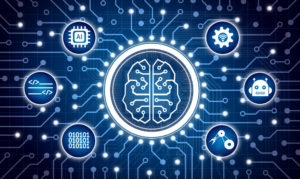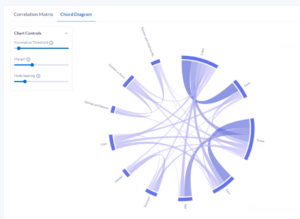
Alteryx Dips Analytics Tools Into Machine Learning Waters

(Zapp2Photo/Shutterstock)
Alteryx arguably is best known for its desktop-based, self-service analytics product, Designer, which is also regarded for its data blending and prep capabilities. Today at its Virtual Global Inspire conference, the company unveiled a host of machine learning capabilities, including a data science add-on for Designer that introduces NLP and computer vision capabilities, as well as a brand new AutoML offering that lives in the cloud.
According to Alteryx Chief Data and Analytics Officer Alan Jacobson, the company started adding machine learning capabilities to its products soon after acquiring Feature Labs in October 2019. First came a new assisted modeling capability, and then an AutoML capability in Designer.
The Irvine, California company took a major step further into the data science realm today with a pair of product announcements.
The first product, the Alteryx Intelligence Suite, is an add-on for Designer that brings a host of new machine learning capabilities, including algorithms for performing natural language processing (NLP) and computer vision analysis on complex textual and image-based data.
“There have been wonderfully powerful algorithms available, but they haven’t necessarily been accessible to everyone,” Jacobson tells Datanami. “So making them drag and drop, easy to use is really the magic we’re bringing to bear here. So everyone can use the power of computer vision and sentiment analysis that once was the domain of only the data scientists.”
Some of the same machine learning capabilities are available in the second new product unveiled today, Alteryx Machine Learning, which is currently in early access. Alteryx describes this AutoML offering as an SDK that works with Designer, but since it runs in the cloud, it has access to considerably more computing power for training machine learning models.
In addition to its GUI, its extensive “learning mode,” and the “signature Alteryx ease-of-use,” what sets the Alteryx Machine Learning apart from other AutoML tools is its feature engineering capability, Jacobson says. That should give data scientist a reason to use it, in addition to Alteryx’s usual audience of business analysts.
“Certainly we made it so analysts can use it,” he says. “With that said, it’s a full-powered machine learning tool with feature engineering and state of the art capability, so our hope would be data scientists would find this useful and interesting as well.”
Both the Intelligence add-on for Designer and the Alteryx Machine Learning offering ship with a plethora of algorithms for accomplishing a range of tasks, from neural networks to traditional machine learning algorithms.
“We didn’t create the XGBoost algorithm,” Jacobson says. “But what we are doing is making those algorithms very accessible so you don’t have to program in Java or Scala or any of these languages” to be able to use them.
But if data scientist want to get down and dirty with Python or R code, they can pull up a Jupypter notebook environment and code to their heart’s content. The combination of the drag-and-drop, graphical interface with the text-based coding environment makes the platform very extensible for a range of users, Jacobson says.
Jacobson demonstrated the new cloud offering’s capability to automatically generate insight from data. Upon loading the Titanic passenger dataset, he showed how Alteryx Machine Learning could find patterns hidden in the data that would not be visible to a casual observer.
“The first thing we do is build a correlational matrix using a technique called mutual information, which is a clever technique that lets me compare numerical to numerical fields, which is what typical correlation does. But here I can compare categorize to numerical, and categorical to categorical,” Jacobson says.
The CDAO demonstrated how a chord diagram automatically generated by Alteryx Machine Learning could show the user how different variables, such as age and gender, impacted survivability on the ocean liner’s fateful maiden voyage. The software showed that gender was predictive of surviving the incident, while age mostly was not (at least above the age of 12 or so).

Alteryx Machine Learning delivers automated insight through features such as computational matrices and chord diagrams (shown)
The goal with Alteryx Machine Learning is not necessarily to build predictive models that can be inserted into Web or mobile applications (although that is possible using the drag-and-drop pipeline builder capabilities built into the product). The goal with the product, Jacobson says, is more to leverage AI and Alteryx’s visualization tools to help data scientists better understand data.
“As a data scientist, I tell you, most of the time when I model data, the outcome is not to put a model into production,” he says. “I’m getting an answer to a question, and based on that answer I take an action. So maybe in the case of Titanic, I want to understand ship design. Were people in higher cabins or lower cabins more likely to die? Once know that answer, I’ll go design ships better, but it’s not actually to put into a full production model.”
In addition to having a slew of machine learning algorithms at one’s fingertips, Alteryx Machine Learning includes a host of instrumentation metrics that are helpful for data scientists, including model comparison features, confusion matrices, and ROC curves.
Alteryx unveiled a third new product today called Alteryx Designer Cloud, which is basically a cloud-based version of Designer. This offering gives users access to the full breadth of Designer features from any Web-based device, and enable more collaboration among groups of users. This offering is currently available as a preview only to existing customers,
Alteryx’s Inspire conference continues today. You can learn more here.
Related Items:
Data Science and ML Platform Market Heats Up
ML and BI Are Coming Together, Gartner Says
Alteryx Tools Aims to Speed Model Deployment






























